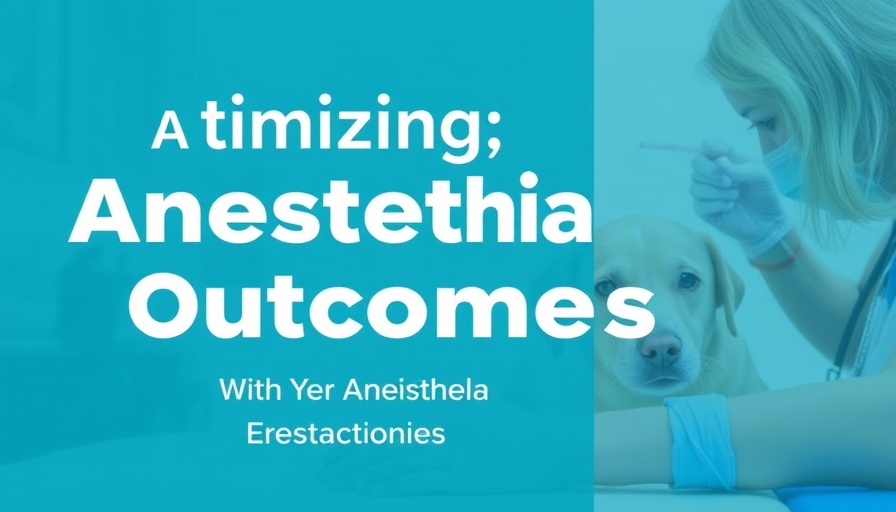
Understanding Elevated Liver Enzymes in Dogs
When faced with the distressing news of elevated liver enzymes in dogs, many pet owners find themselves overwhelmed by the implications and the necessary steps that follow. As vital components of canine health, liver enzymes such as ALT, AST, ALP, and GGT signal various underlying conditions that could range from benign to severe. Understanding what these enzymes mean can empower pet owners to advocate confidently for their furry companions.
What Do Elevated Liver Enzymes Indicate?
Elevated liver enzymes serve as crucial indicators of liver health. While conditions like hepatitis can lead to increased ALT and AST levels, it is important to recognize that not all elevations directly correlate with liver damage. For instance, ALP and GGT are typically elevated in cases of cholestasis—where bile flow is obstructed—and can also reflect other issues such as bone disease in growing dogs. As integrative veterinarian Dr. Julie Buzby emphasizes, while elevations signal something is amiss, the context is paramount.
Types of Liver Enzymes and Their Implications
To make sense of liver enzyme elevations, it’s essential to categorize them into hepatocellular (ALT and AST) and cholestatic (ALP and GGT) enzymes. Hepatocellular enzymes indicate possible liver cell damage, whereas cholestatic enzymes suggest issues with bile flow. This dual approach allows veterinarians to pinpoint the likely culprits leading to elevated enzyme levels, streamlining the diagnostic process.
Decoding AST and ALT Elevations
ALT, or alanine aminotransferase, is primarily located within liver cells. An elevation in this enzyme is often a clear indicator of liver damage, particularly acute attacks where the liver has suffered injury. Conversely, AST, or aspartate aminotransferase, can also be found in muscle tissue, making it less specific and necessitating further investigation when elevated. This distinction proves critical when diagnosing conditions such as muscular damage versus liver dysfunction.
The Role of Cholestatic Enzymes
Alkaline Phosphatase (ALP) and Gamma-glutamyltransferase (GGT) expand the diagnostic toolkit. ALP is commonly associated with bile duct issues but can be influenced by external factors such as medications and age-related bone growth. GGT is more specific to liver pathologies, primarily elevating alongside ALP in cases of cholestasis. When both enzymes present elevated levels, the likelihood of underlying liver disease increases significantly.
Diagnostic Pathways: From Tests to Imaging
Determining the cause of elevated liver enzymes often begins with a comprehensive blood chemistry panel, including a complete blood count (CBC) and urinalysis. Advanced diagnostic tools like ultrasound and liver biopsies can be invaluable in assessing structural abnormalities or confirming the presence of diseases such as liver cancer. Utilizing imaging techniques allows for better visual assessments of liver health, helping veterinary professionals devise precise treatment plans.
Management Strategies: A Collaborative Approach
Handling elevated liver enzymes is typically a collaborative effort between owners and their veterinarians. Depending on the complexity of the case, strategies may range from simple monitoring of enzyme levels to implementing dietary changes or medication to manage symptoms. In severe cases, surgical intervention may be indicated. Understanding the context of elevated liver values and working closely with a veterinarian creates a proactive management plan that enhances the dog's quality of life.
Future Prognosis and Key Considerations
It’s critical to maintain regular follow-ups to monitor your dog’s liver health over time. Various factors including age, breed, and previously existing conditions influence prognosis, making individualized care plans essential. For example, certain breeds may exhibit elevated liver enzymes due to genetic predispositions, necessitating tailored monitoring approaches. Furthermore, many dogs show positive responses to management interventions, and the liver's regenerative abilities provide hope for recovery even in severe cases.
Conclusion: Empowering Pet Owners with Knowledge
Elevated liver enzymes represent a call to action rather than a cause for despair. As pet owners become informed and engaged in their canine companion's health journey, they can foster better outcomes through collaborative veterinary care. Recognizing the meaning behind liver enzyme elevations equips owners with the ability to make sound decisions and advocate effectively for their beloved pets during veterinary appointments. By applying this knowledge, owners can contribute significantly to their dogs' health and well-being.
 Add Row
Add Row  Add
Add 




Write A Comment